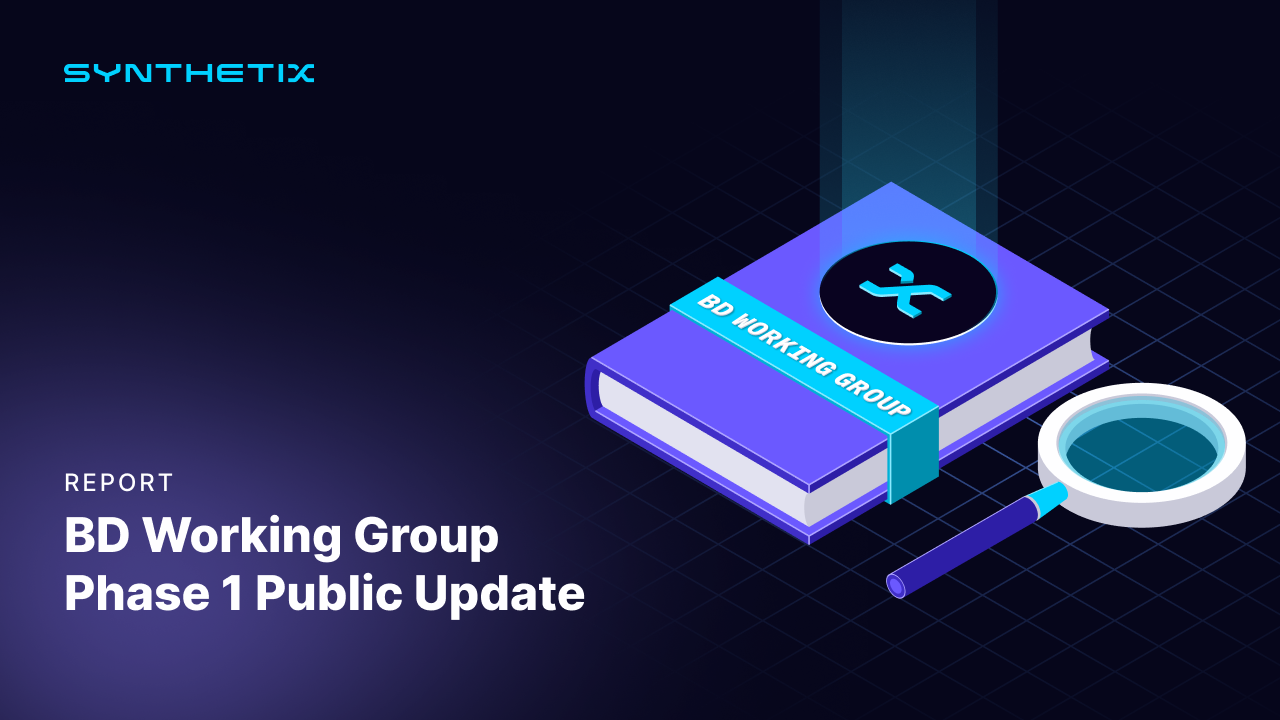Boosting institutional fund activity on Synthetix

STP-5 initiated a BD working group with the goal of increasing activity by institutional funds in the Synthetix ecosystem. This summarizes the results of Phase 1 of the project.
Research
The project started off with a research phase, with the intention of discovering the blockers that may prevent professional funds from trading on Synthetix at-scale. Funds and market makers were pitched and interviewed as part of this research, and some learnings were put into practice.
For example, STP-10 was created to provide $SNX incentives for traders that do more than $100mn/mo in volume. However, this volume seemed hard to reach, especially on v3, so the pool of funds under this STP has not yet been drawn upon.
Another STP, STP-16, is a research-specific grant for delta neutral traders to integrate with the v3 system and provide a written report with their findings on the strengths and weaknesses of the v3 system. At this point we are engaging with Wintermute on this STP and are obtaining valuable information about what sizable traders care about in a perps system.
Another thread of research was performed on the custody needs of institutional funds, whose security requirements may differ significantly from retail traders. Based on this research, we are confident we can integrate with Fireblocks and Safe if funds require trading through these enterprise-standard custody solutions.
Select Findings
Note: These findings are not exhaustive, and we need more data points to make more conclusive statements.
- Learning curve: there is a relatively steep learning curve for funds that are used to order book platforms and centralized exchanges. Some features that create a steeper learning curve: order delay, oracle mechanics, fee split, role of keepers (and conflicts of interest), all of which make arbing against a CEX more tricky
- Funds are at different levels of understanding. Some are defi native but are less sophisticated; some are experienced tradfi quants starting to crossover. We should personalize onboarding docs and outreach strategy to different fund profiles
- Chains: Many traders are somewhat agnostic on which chains they trade on as long as they are EVM. However, some traders perfer sticking to one chain as they are deeply aware of the nuances of each chain (execution, risks, etc)
- Incentives: almost every trader is hunting for incentives, though some are happy enough with zero fees on select markets (e.g. ETH and BTC on Base). Other platforms have more mindshare for incentives programs. However, this is not a sustainable way to acquire traders; other approaches than direct outreach should be explored
- Ideal scale: parameters such as skewscale are chosen to balance the profit opportunity between directional traders and arbers. As a result, when trading volume is subscale, there is also limited opportunity for arbitrageurs. To allow meaningful profit opportunity for all traders, it is estimated that an implementation should have at least $100mn/day in trading volume
- Our fund onboarding process can be significantly improved with fuller documentation, especially with a version tailored to funds newly onboarding to v3
Professionalizing the Onboarding Process
To improve the pitching process, a pitch deck was created. To better explain the delta neutral profit opportunities, a set of financial models were created (which have already been well-received by at least one fund crossing over from tradfi into digital asset trading). In addition, based on many months of back and forth Q&A with funds, an FAQ was started.
In combination, these pieces of collateral will make it easier and quicker for funds to onboard, eliminating time delays in cross-timezone communication while also reducing time spent by CCs on answering repeat questions.
In addition, a customer relationship management (CRM) platform was set up, in order to better track and follow up with potential counterparties.
Other Matters
Credits: Troy (CC), Kaleb (CC), Burt (SC and Kwenta), Cav (CCC) and Rafa (ex-CC) were important contributors to the outcomes of Phase 1 - thank you! :)
Some of the challenges met during this phase of the BD project were:
- Selling v3 when not yet ready, in early 2024
- Early-stage systems that required fixing on the fly (v3 feature set, SDK)
- Difficulty getting funds to explain clearly why they ended up not trading
- Getting adequate context on roadmap in order to better work with funds
Next phase
In the next phase of the BD project, we will focus on onboarding and retaining funds, bridging between BD and Product, and between BD and marketing, as well as competitive intelligence.

